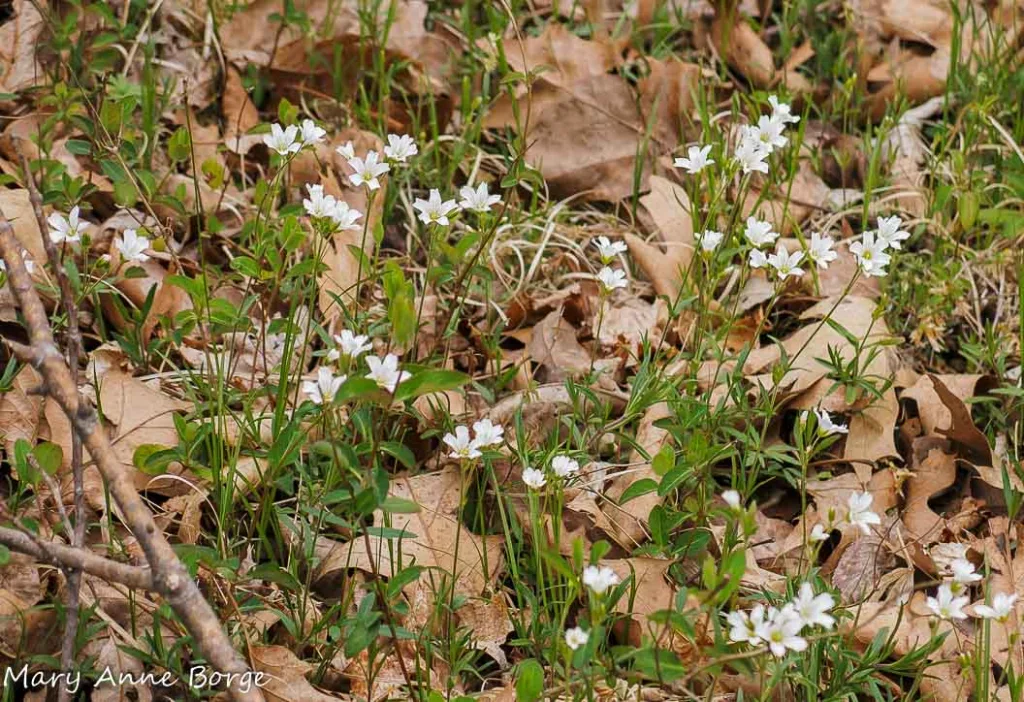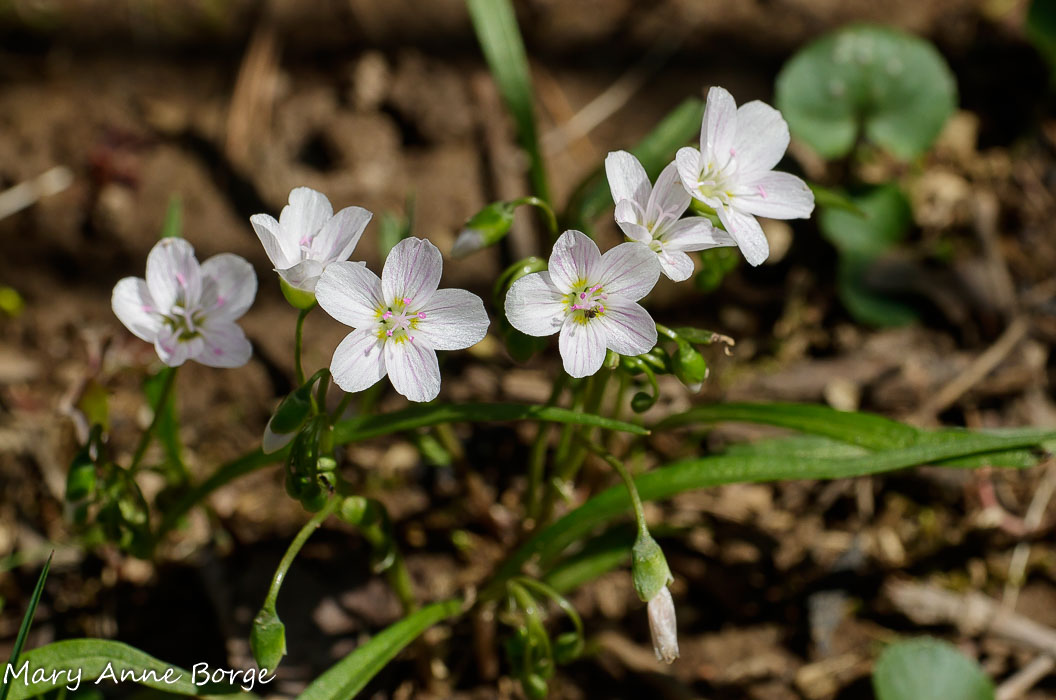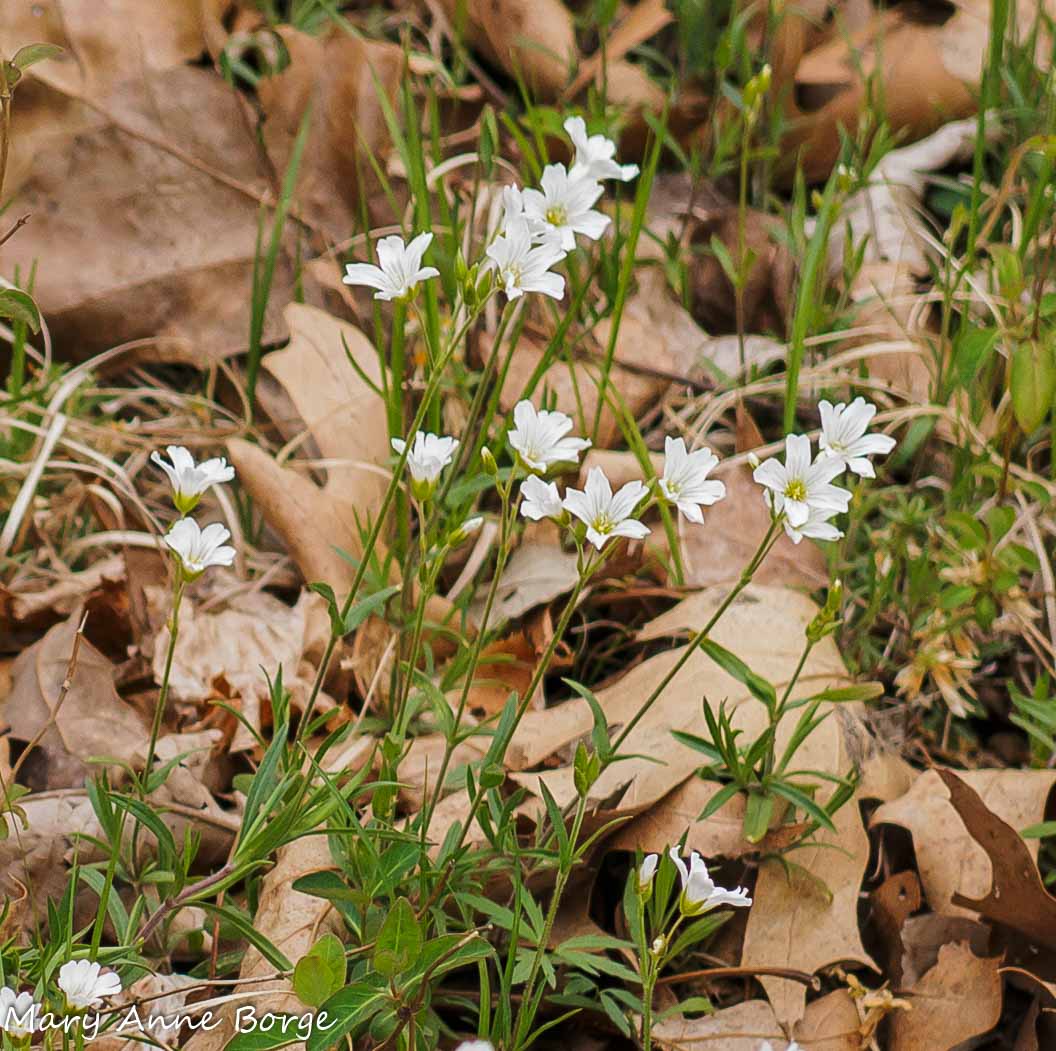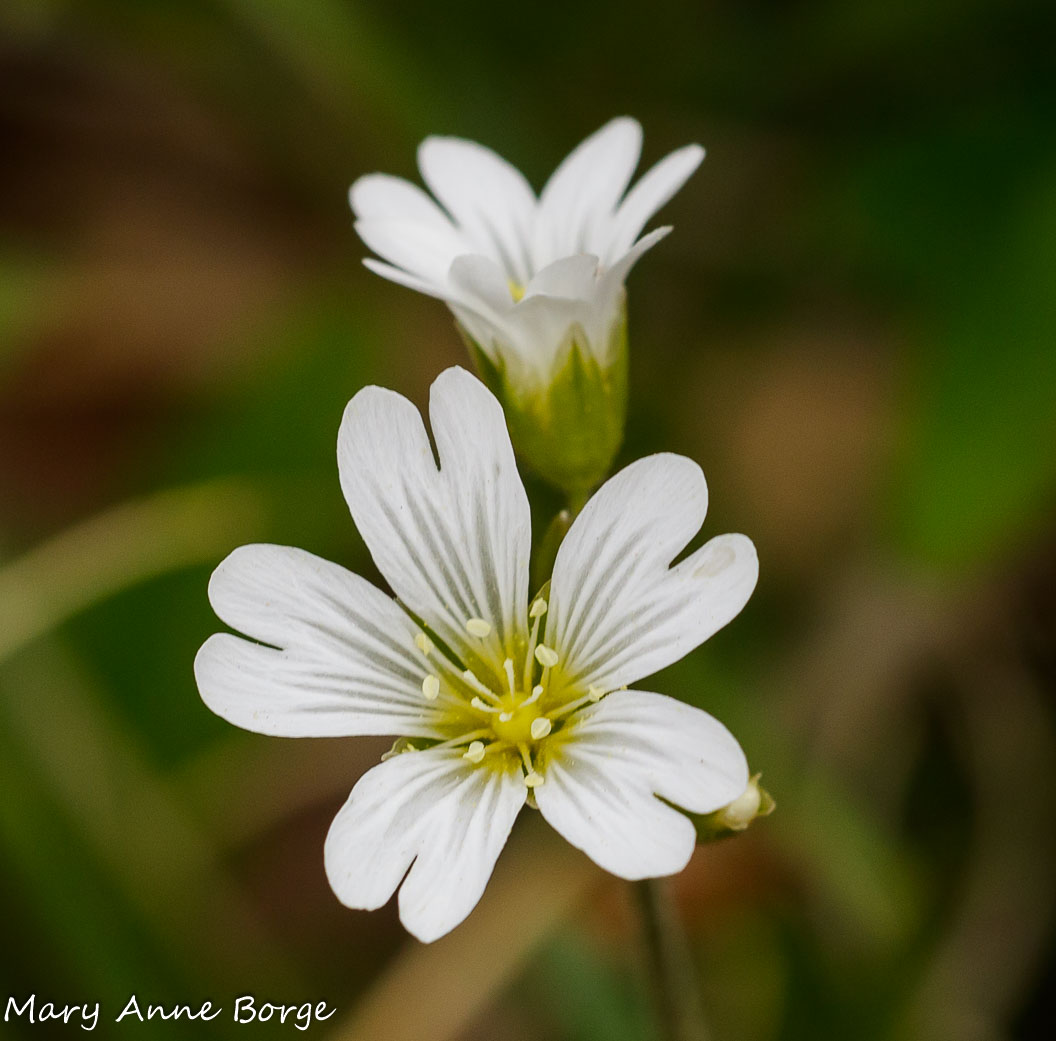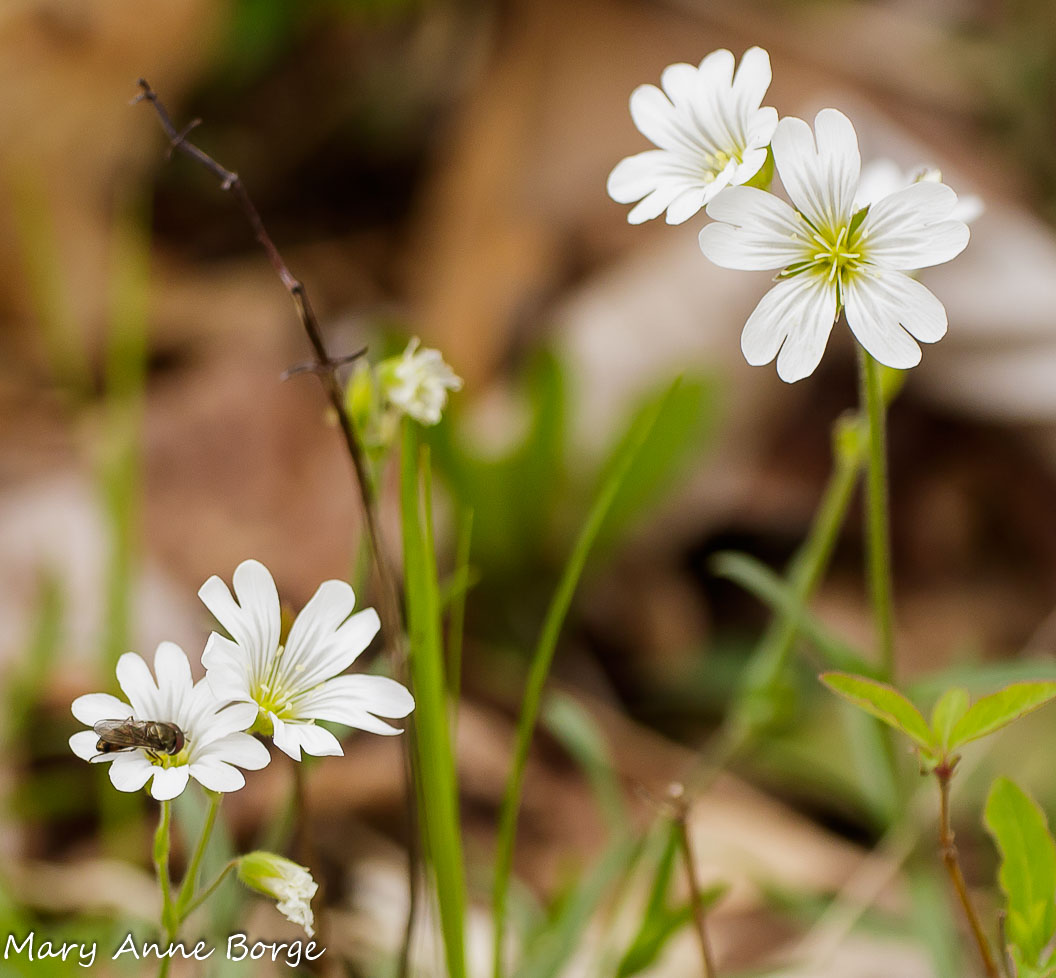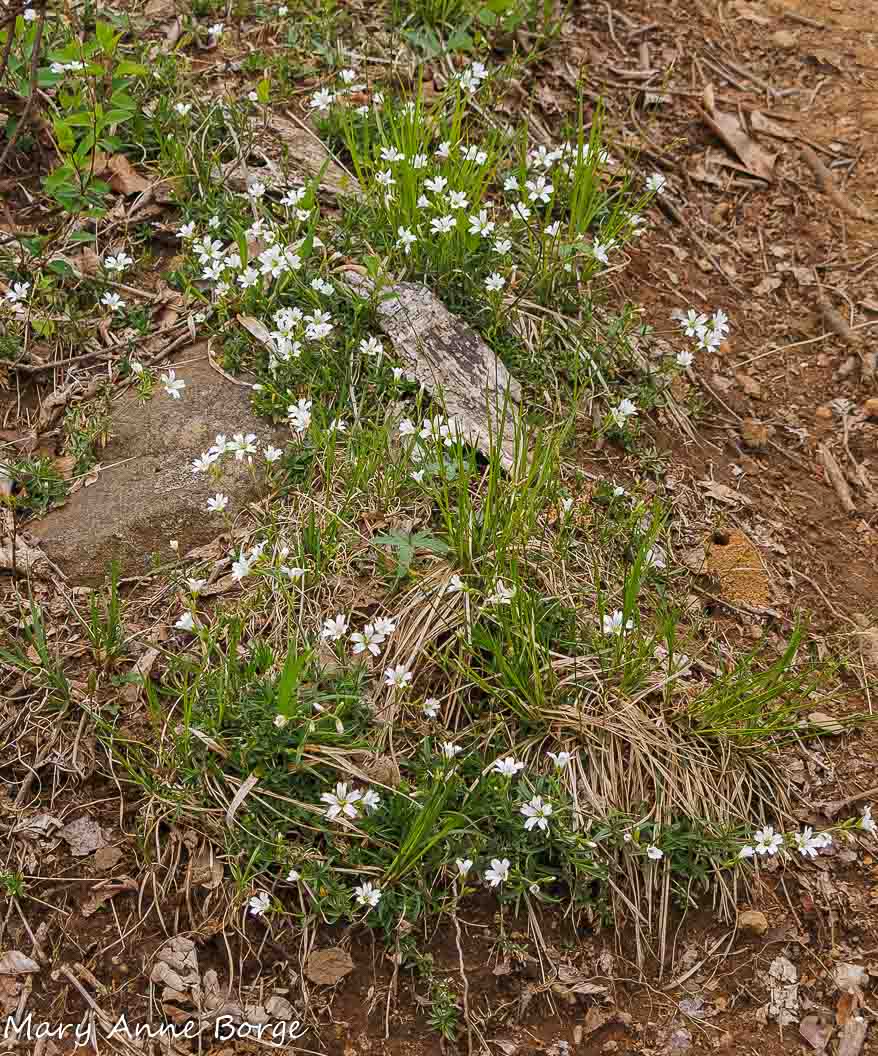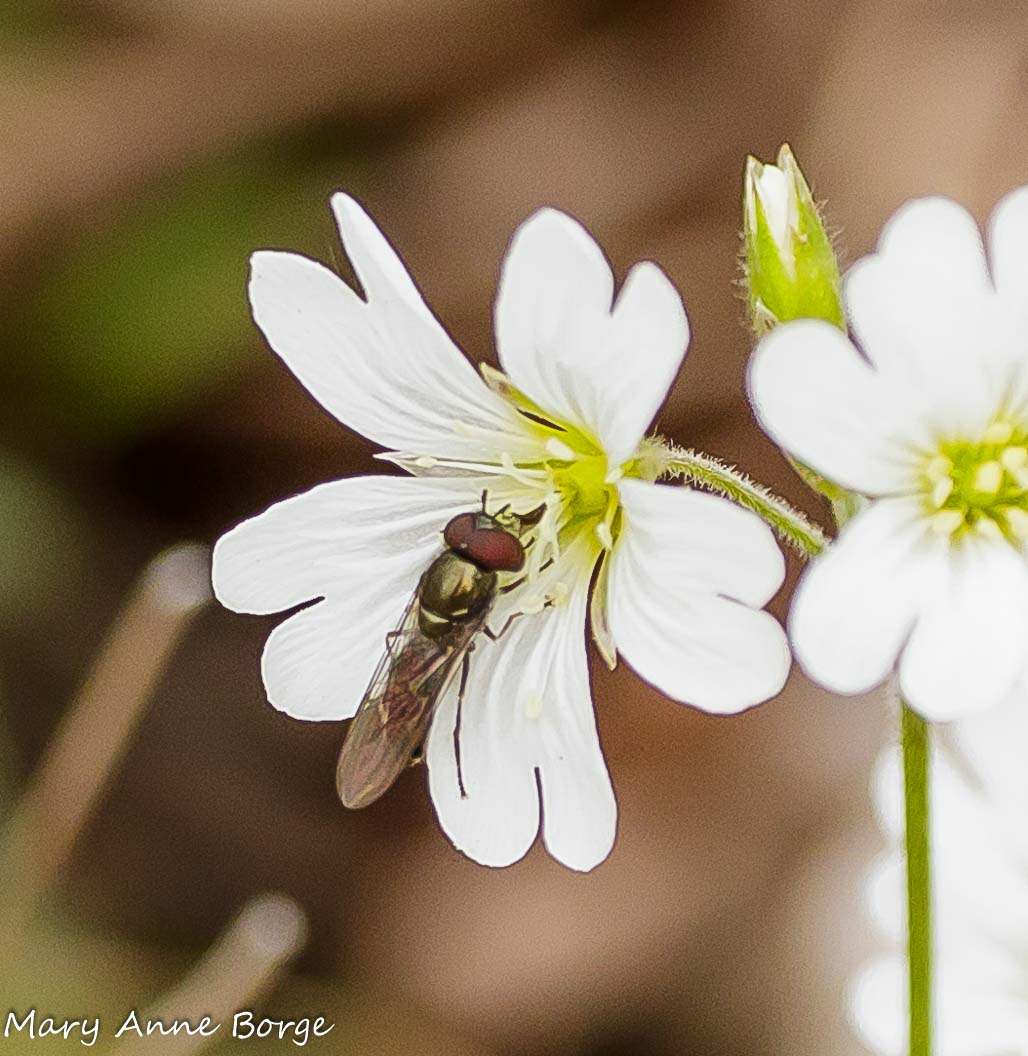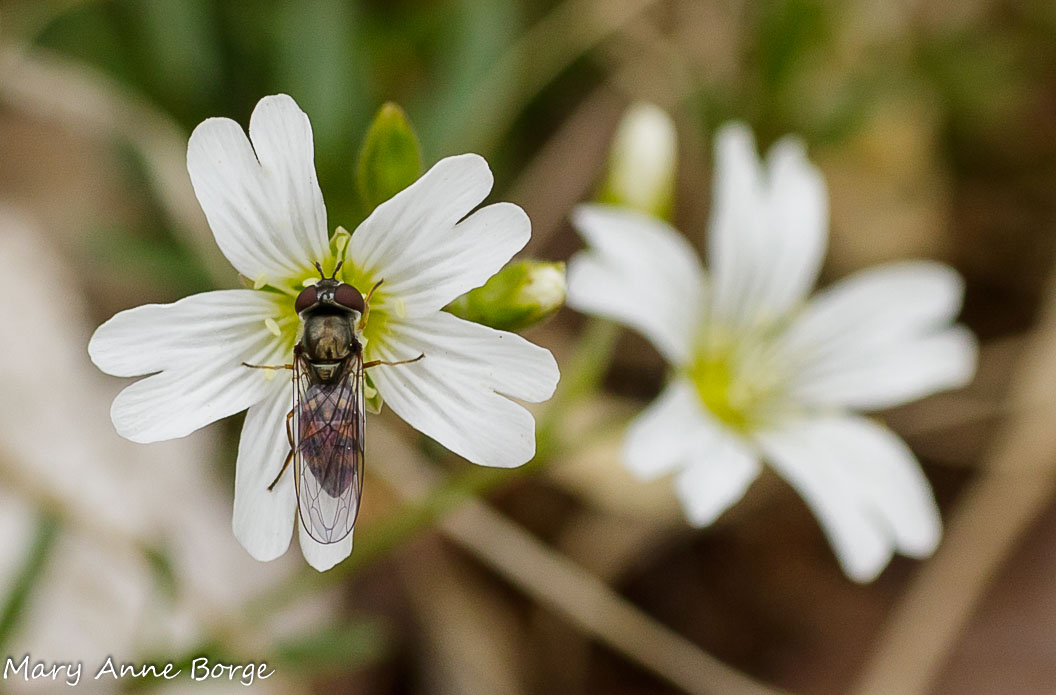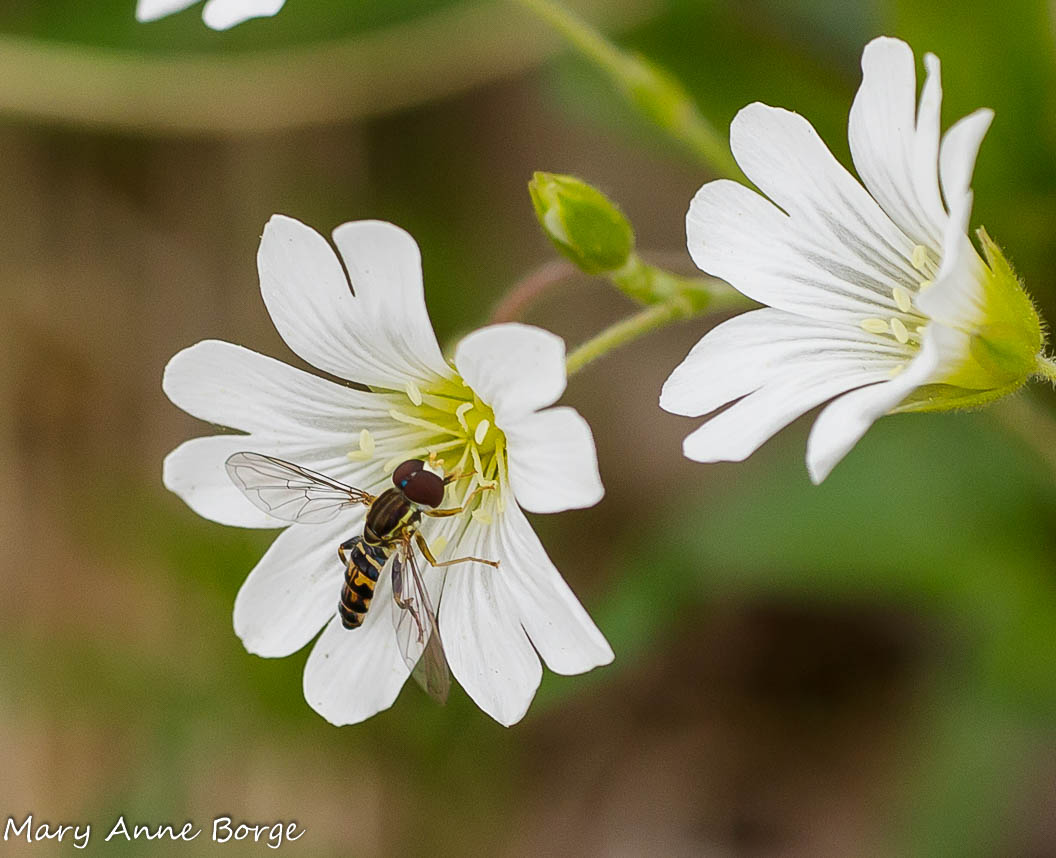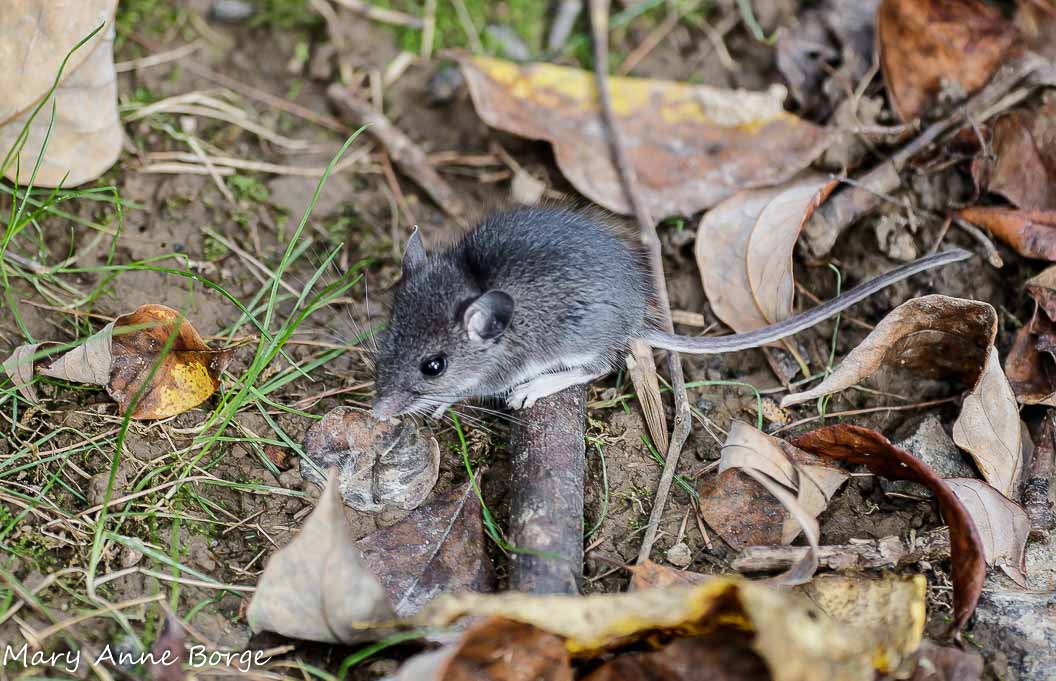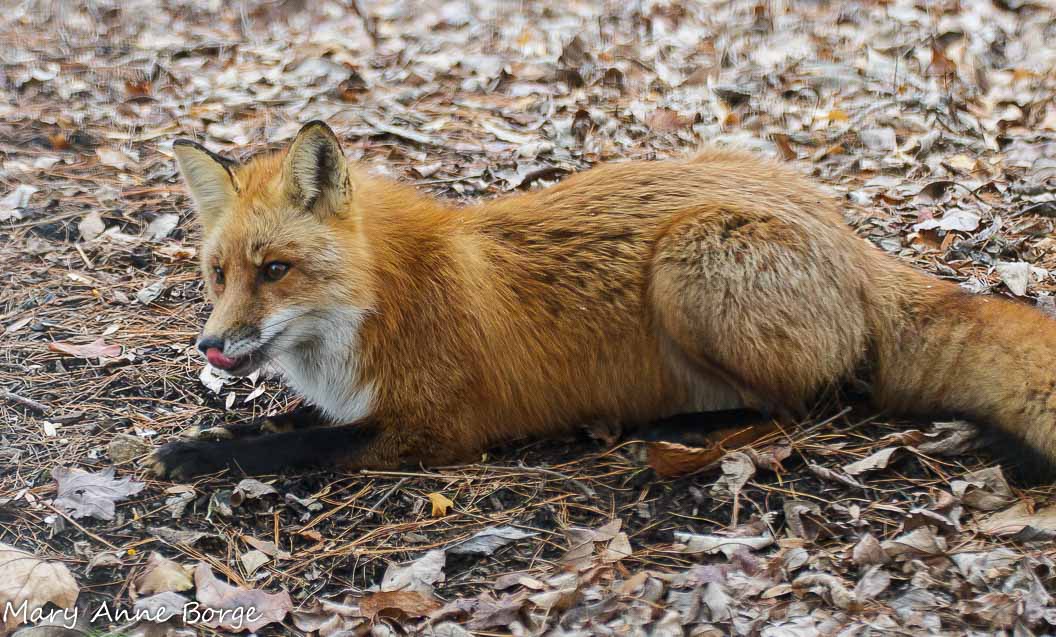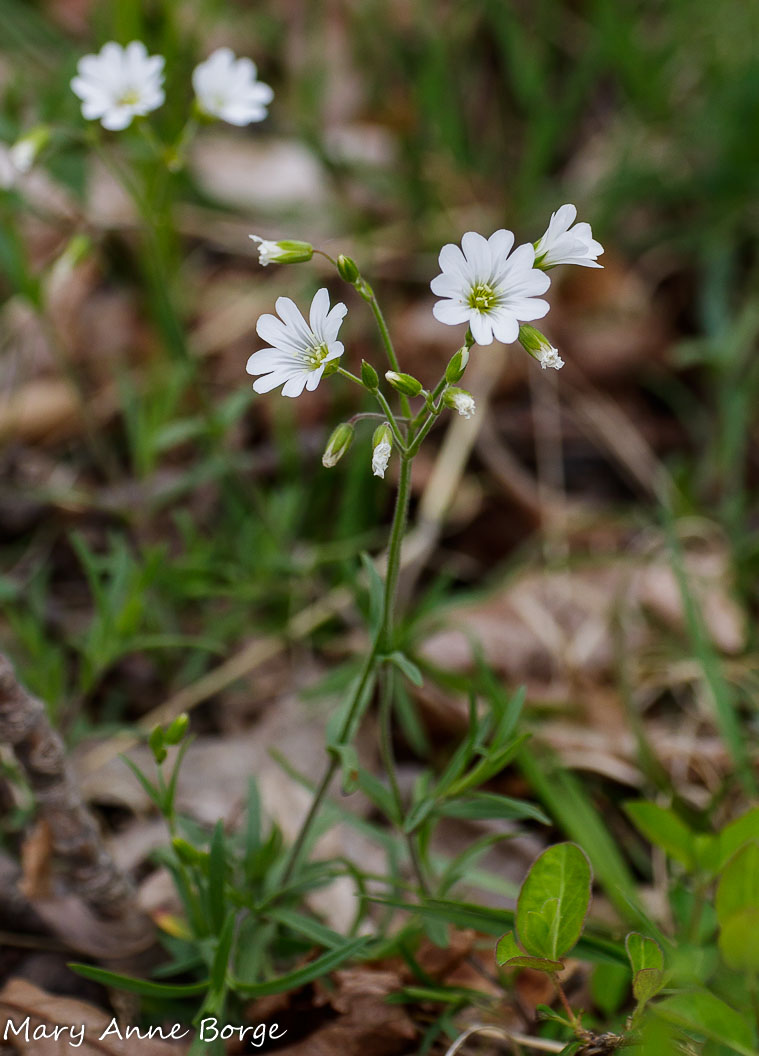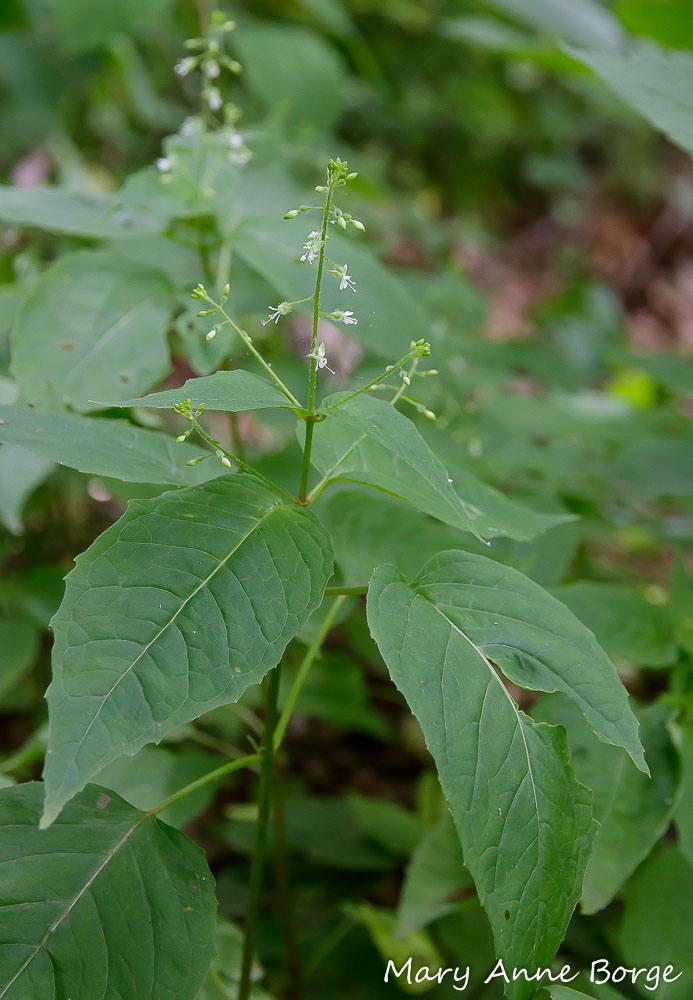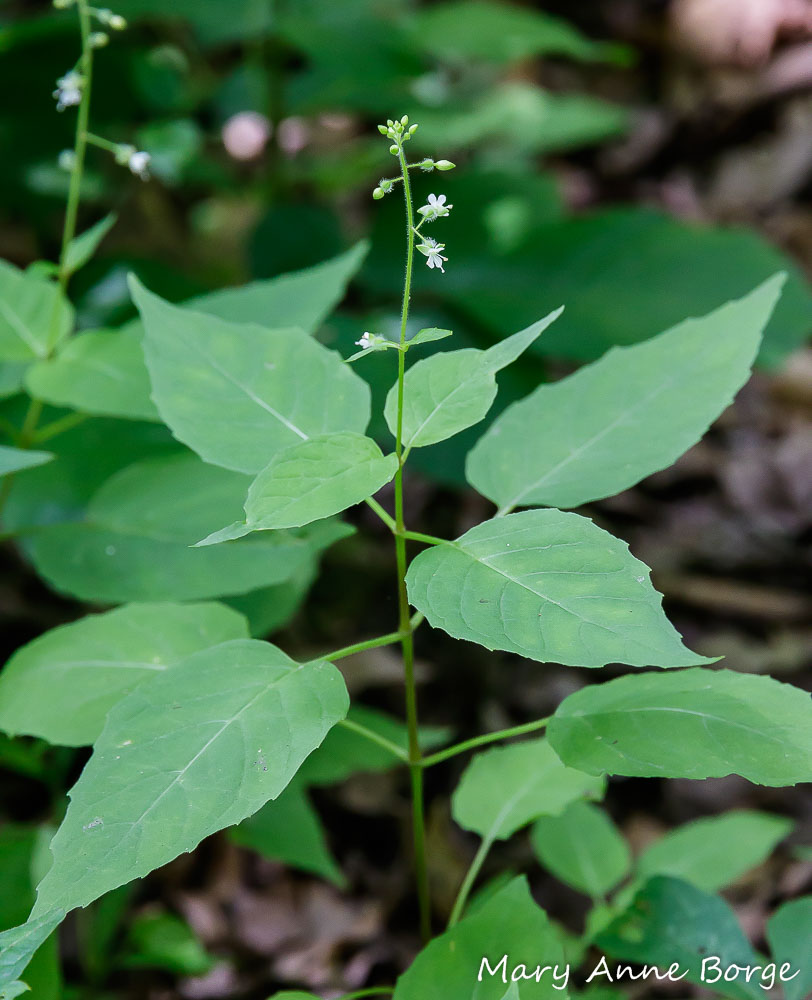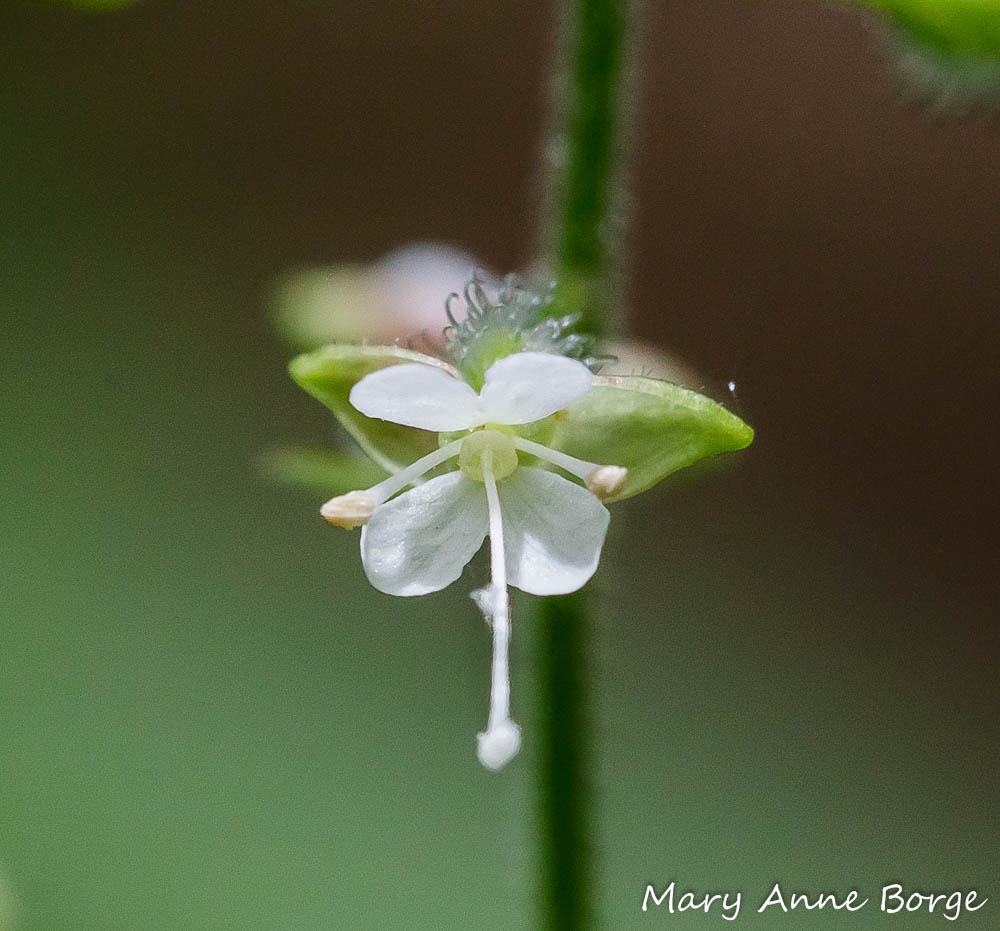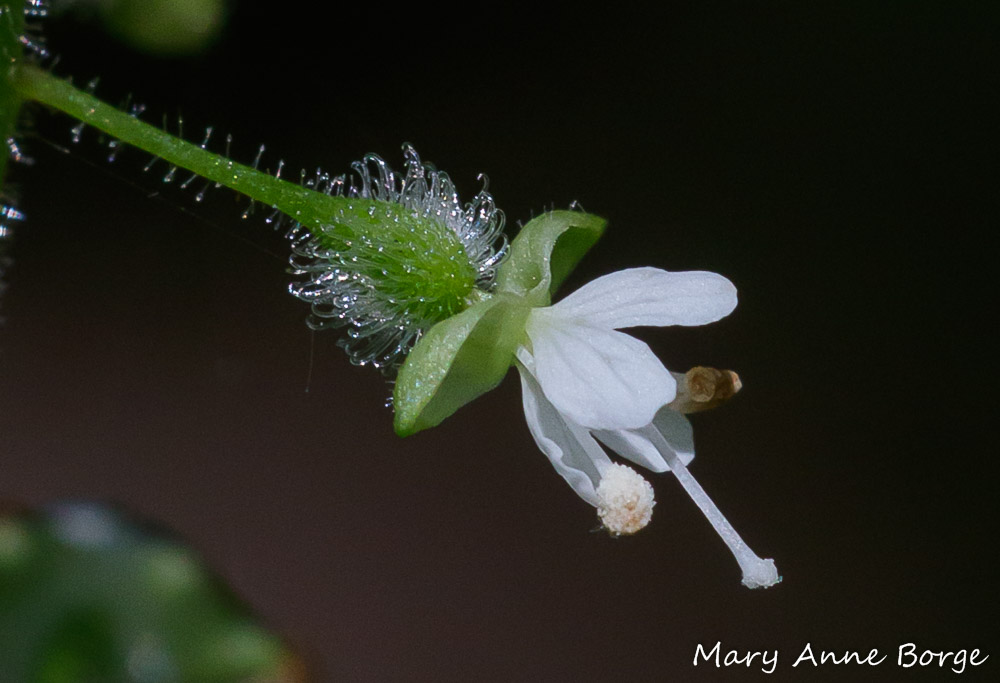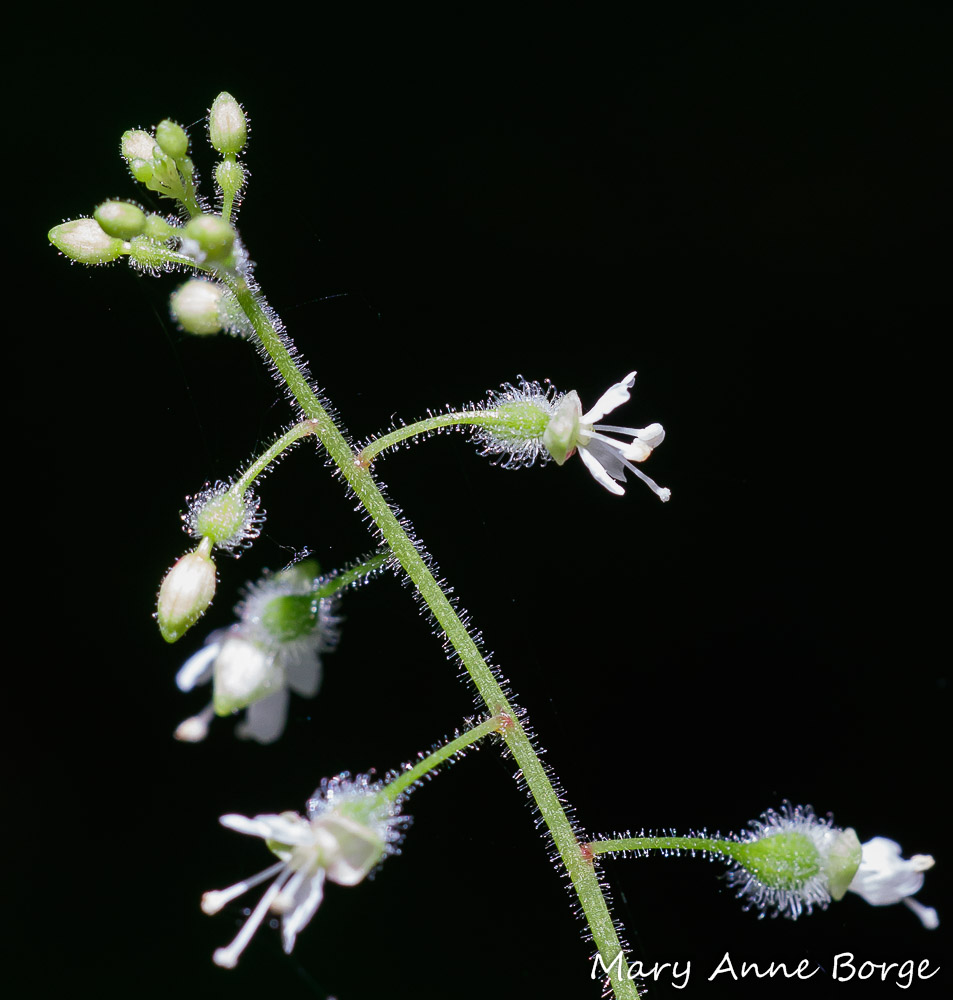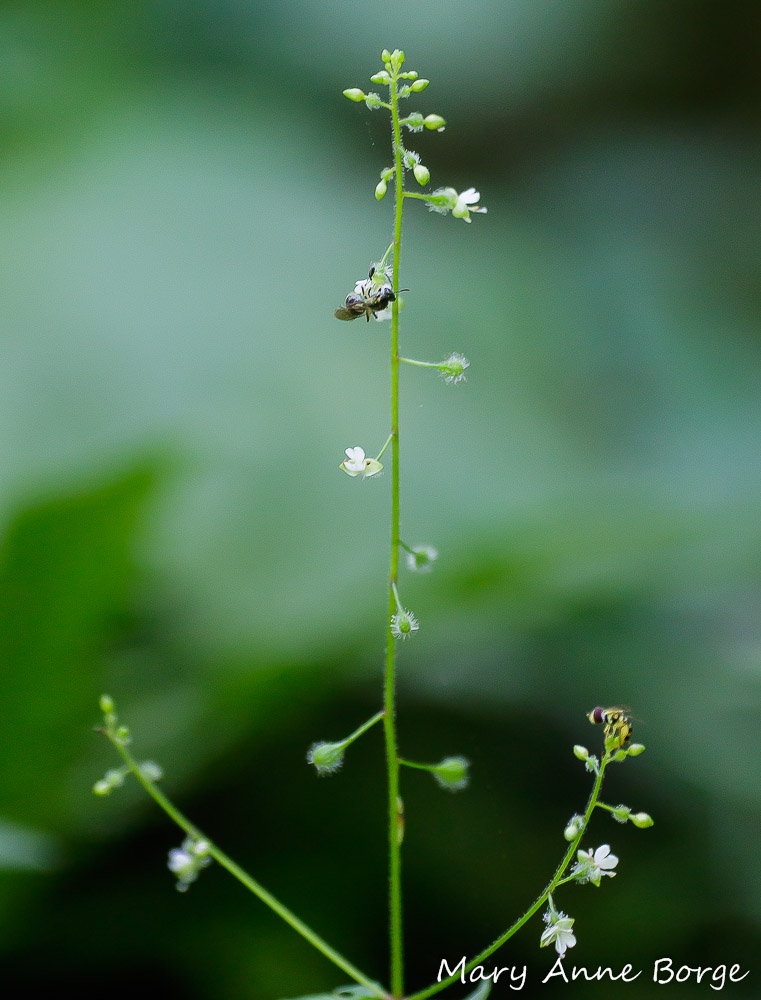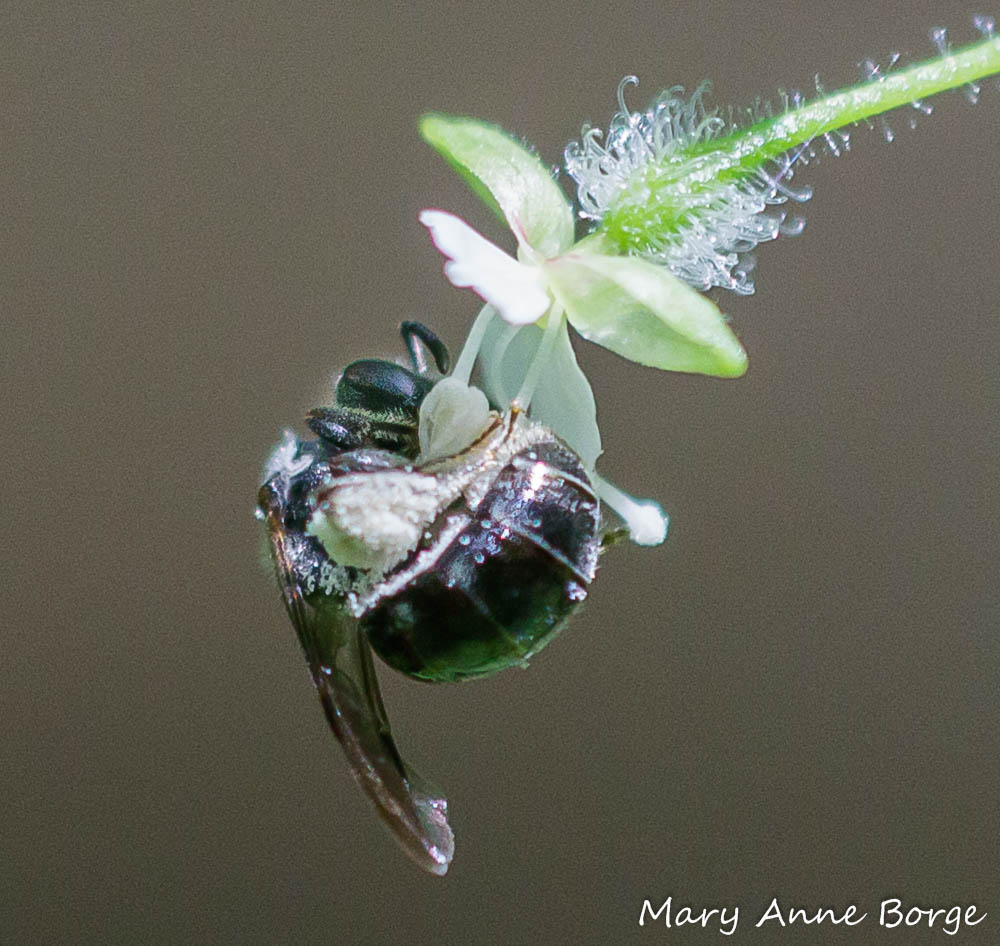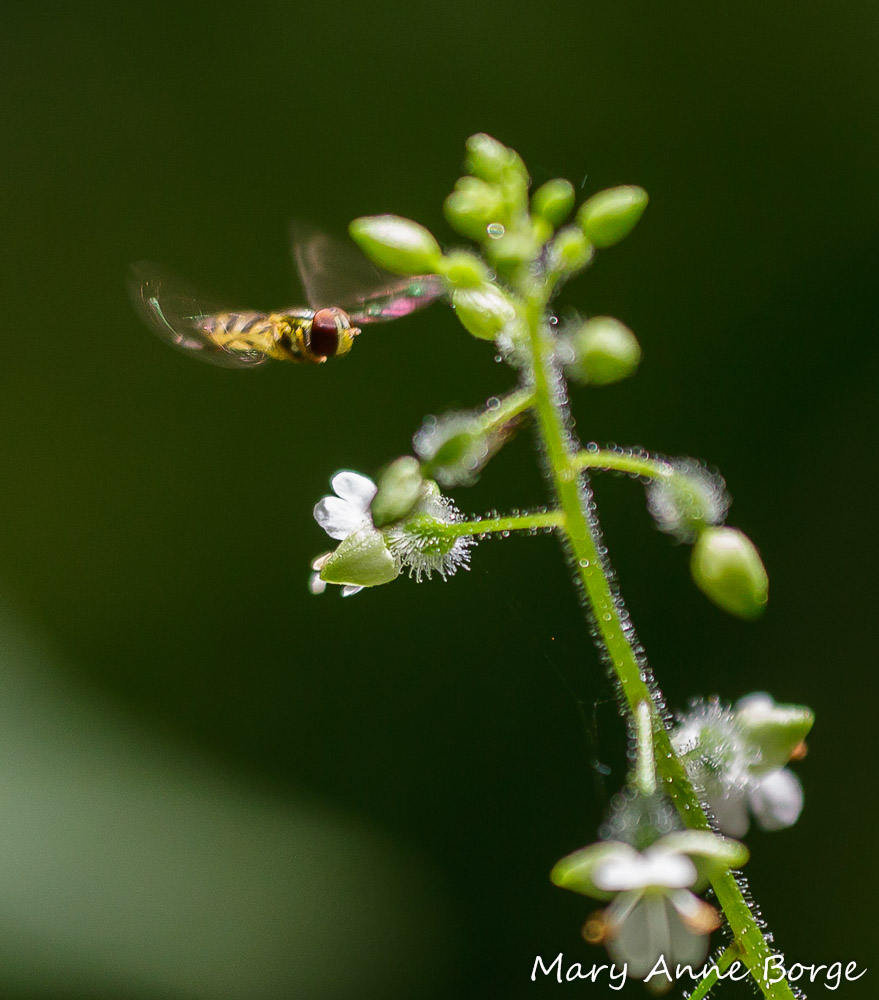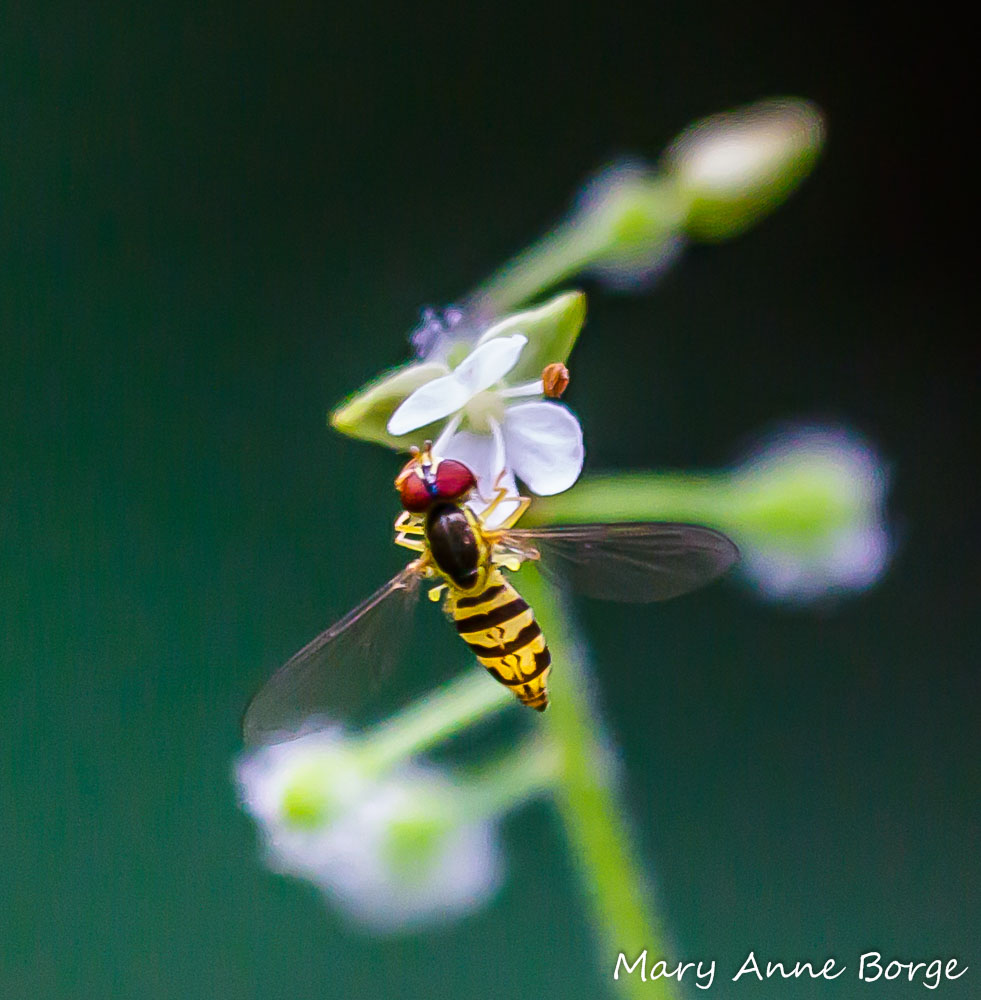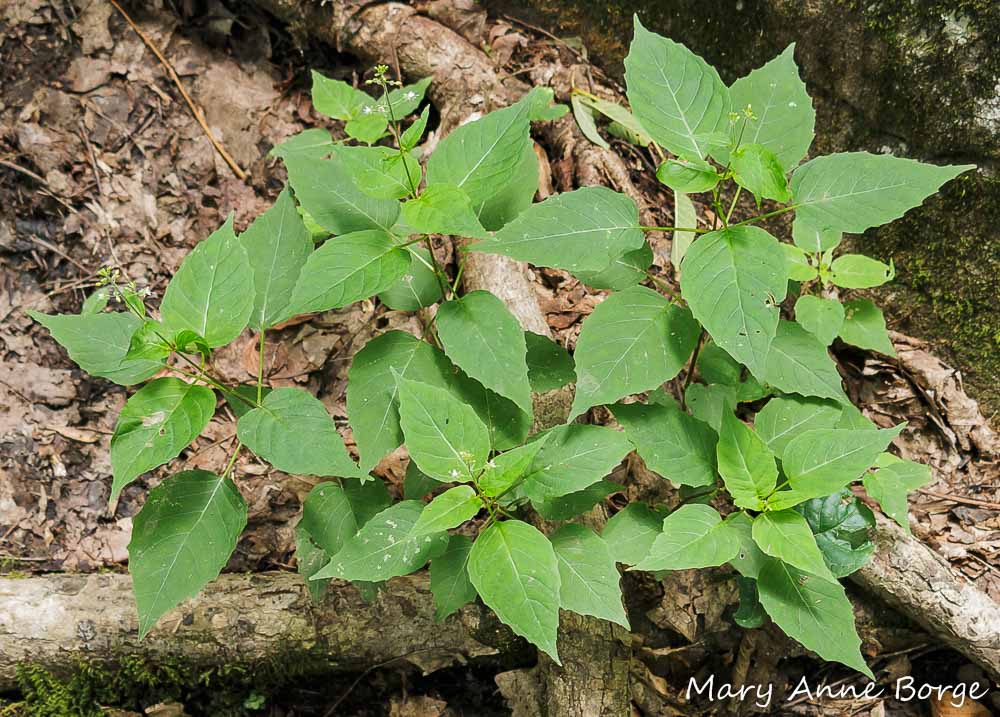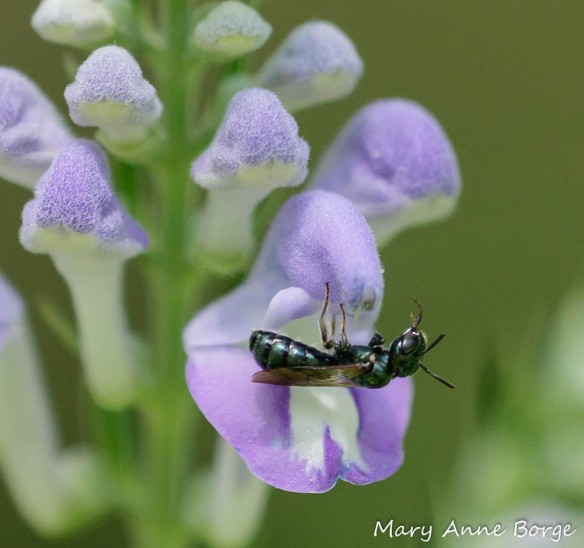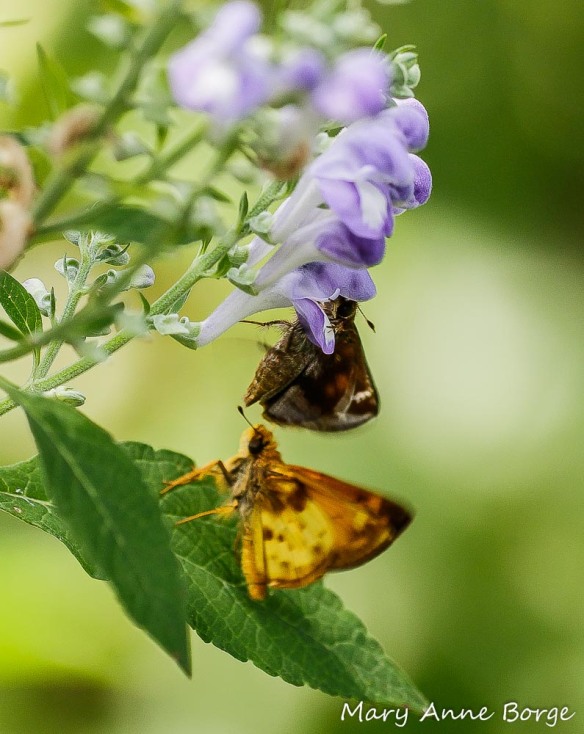Blooming in mid-spring, Showy Orchis (Gaelaris spectabilis), also known as Showy Orchid, peeks out from its home on the forest floor from beneath the leaves of other species that tower above it.

Showy Orchis (Gaelaris spectabilis) in bloom, with Perfoliate Bellwort (Uvularia perfoliata)
A stem rises from two broad, firm, almost succulent leaves at the base of the plant, presenting a cluster of lovely flowers, typically purple and white.

Showy Orchis (Gaelaris spectabilis)
The purple hood-like structure at the top of the flower is made up of three sepals abutting each other. The sepals acted as bud scales that protected the flower before it opened; in bloom, the sepals are part of the showy floral display, and at the same time they continue to protect the flower’s reproductive parts. Each flower also has three petals, two of which are tucked up on the underside of the hood, the third is the long, white petal hanging down below the hood. This petal is called a lip or labellum, and makes a good landing platform for visiting insects.

Showy Orchis (Gaelaris spectabilis). If you look carefully, you can see where the edges of the sepals touch each other to form the hood.
While the flowers are usually purple and white, occasionally they are all white (forma gordinierii) or all purple (forma willeyi), like the plant in the photo below.
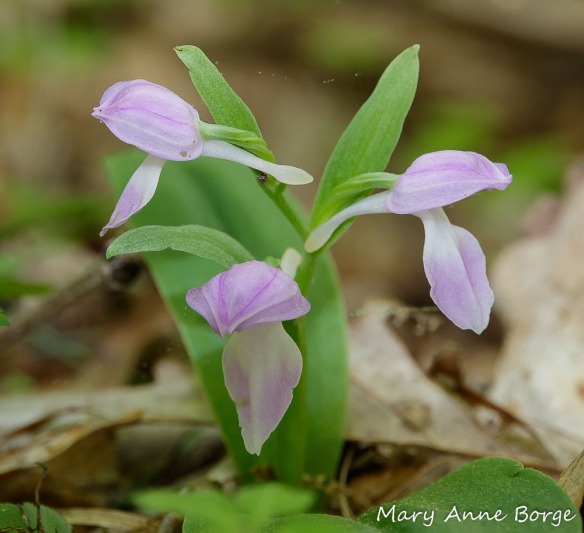
Showy Orchis (Gaelaris spectabilis) forma willeyi
This native orchid grows to a height of about 4 to 8 inches (10 to 20 cm), but its beauty is arresting. Both the common name, Showy Orchis, and the scientific name accurately reflect the appearance of this petite beauty. Showy Orchis’s genus, Gaelaris, means helmet, referring to the helmet-like hood at the top of the flower. Spectabilis means spectacular or showy, something these flowers certainly are, proving once again that you don’t have to be large to make a statement. (See American Hazelnut and Purple Milkwort flowers.)

Showy Orchis (Gaelaris spectabilis) in bloom. To give some size perspective, notice the Round-lobed Hepatica leaf to the left of the Showy Orchis flowers.
Plants that have bright showy flowers have evolved to attract animals to be pollen couriers, since the animals have the ability to carry pollen from one plant to another. This assistance is necessary for the plant species to accomplish its objective of cross-pollination. Showy flowers attract potential pollinators with the promise of food, much like signs for our favorite restaurants attract us. In North America, insects are the most common target audience for this display.
While some plants can self-pollinate, including Showy Orchis, cross-pollination yields a stronger genetic result. (It’s the same reason people are told not to marry a cousin or other close relative.) Plants can bend, but they can’t move from the spot where they are rooted. They have to enlist a third party to assist them in transporting pollen.
Insects don’t help with pollination out of altruism. They are foraging the flowers for food for themselves, and in the case of female bees, they also need to bring food back to their nests to feed their kids (larvae). They expect to be compensated for their visits, usually in the form of nectar or pollen, or both. If a plant species wants a potential pollinator to keep visiting enough flowers to help with cross-pollination, it will likely have a higher success rate if it provides payment for services rendered.
Not all plants play by this rule. The Lady’s Slippers and Puttyroot orchids are among the thirty percent of orchid species that rely totally on deception to entice potential pollinators; they don’t actually offer any payback. They have attractive flowers that advertise a reward, but they don’t deliver. This could explain their low rate of pollination success.

Pink Lady’s Slipper (Cypripedium acaule). A deceptively attractive flower that doesn’t deliver a reward to pollinators
Showy Orchis has evolved to take a less risky approach. This lovely species provides nectar to pay its pollination partners for their services. The white petal, or lip, extends into a long nectar spur at the back of the flower, accessed at the flower’s throat from beneath the hood.
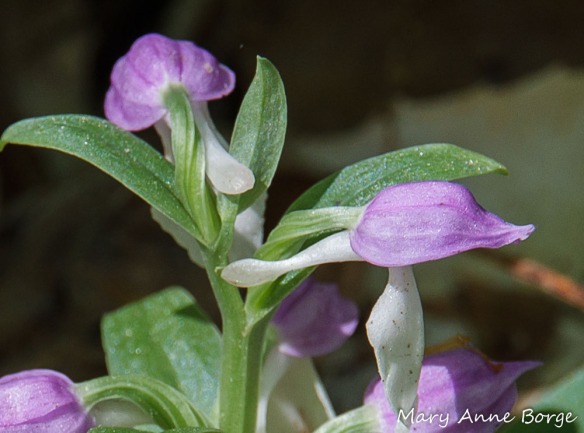
Showy Orchis (Gaelaris spectabilis). Note the long white nectar spur extending from the back of each flower.
Queen Bumble Bees are the primary pollinators for Showy Orchis. In spring they can often be seen flying a few inches above ground when woodland wildflowers are blooming.
Pollen is an important part of a bee’s diet, so a visiting queen Bumble Bee would also love to be able to harvest and eat the orchid’s pollen in addition to drinking nectar. But Showy Orchis pollen is not dispersed in loose grains that can be accessed easily by a pollinator. Instead, its thousands of tiny pollen grains are packaged in pollinia, which are a little like tiny saddle bags of pollen. Milkweed pollen is also packaged this way.
Bees don’t knowingly move pollen from one flower to another, they typically have to be manipulated by the plant to carry out this task. Showy Orchis is capable of such manipulative behavior. The flower’s reproductive parts are sheltered in a column under the hood of the flower. The stigma, the female flower part where pollen must be deposited in order to initiate the pollination process, is close to the opening for the nectar spur. A small projection called a rostellum tops the stigma, and the male reproductive parts are next to the rostellum.

Showy Orchis (Gaelaris spectabilis). The entrance to the nectar spur is at the throat of the flower, just below the hood. The flower’s reproductive parts are suspended from the hood. The rostellum is the small projection with two rounded humps. The sheaths that hold the male reproductive parts are above the rostellum, the stigma is behind it.
As a bee moves into position at the flower’s throat to drink nectar, its head touches the rostellum, breaking it open. This triggers the release of the pollinia from sheaths in which they developed on the underside of the flower’s hood, and of sticky pads concealed in the rostellum that attach the pollinia to the bee’s forehead between its antennae.

As Showy Orchis (Gaelaris spectabilis) flowers age, their hoods lift, revealing the reproductive parts that were hidden. In this photo, the reproductive parts viewed together look like a boxer whose outsized arms and hands are raised in victory. What appears to be the boxer’s body is the rostellum, the stigma is below, as if it were a podium hiding the rest of the boxer’s body. The stamens (male reproductive parts) were enclosed in what look like arms, the pollinia in the ‘gloves’.

Showy Orchis (Gaelaris spectabilis). In this photo, it appears that the pollinia were not released, and are still enclosed in their sheathing.
The pollinia is now attached to the bee in the perfect position to deposit on the stigma of the next Showy Orchis flower she visits. She will unwittingly aid Showy Orchis in cross-pollination.
If a flower is successfully pollinated, it will produce a dry, woody fruit capsule containing thousands of dust-like seeds.

Showy Orchis (Gaelaris spectabilis) fruit capsules
The fruit capsule persists through the winter months and even into the following spring. When it finally breaks open, these weightless seeds are dispersed by the wind.

Showy Orchis (Gaelaris spectabilis) fruit capsules are often still visible the following spring.
The seeds don’t have any food reserves of their own, so in order to get the nutrients they need to develop into a viable plant, the seeds have to find the right mycorrhizal fungi with which to partner. Mycorrhizal fungi live in the soil and partner with plants, providing nutrients from the soil to the plants. In return the plants provide carbohydrates to the fungi. The fungal network may also help plants share nutrients with each other. Current scientific thought is that Showy Orchis partners only with fungi in the genus Ceratobasidium. Without this fungal partnership, Showy Orchis won’t survive.
Showy Orchis is often found growing in the company of Mayapple, Perfoliate Bellwort, Solomon’s Seal, False Solomon’s Seal, Rue Anemone, Hepatica, Spring Beauty, Jack-in-the-pulpit, Bloodroot, Spicebush, and other spring blooming wildflowers and ferns.

Showy Orchis (Gaelaris spectabilis) in bloom, with Bloodroot (Sanguineria canadensis), Perfoliate Bellwort (Uvularia perfoliata), violets (Viola species) and a fruit capsule
Showy Orchid is native in the rich, deciduous woods of the United States from Maine to Minnesota in the north, south to southeastern Oklahoma and northwestern South Carolina, and in Ontario, Quebec and New Brunswick provinces in Canada. Look for its showy display in mid-spring.

Showy Orchis (Gaelaris spectabilis) in bloom
Related Posts
Yellow Lady’s Slipper – Like Winning the Lottery
An Orchid in Winter (Puttyroot)
A Tantalizing Promise – Cranefly Orchid
Signs of Spring – Hazelnuts in Bloom
A Small Beauty: Purple Milkwort
Milkweed – It’s Not Just for Monarchs
Resources
Consortium of Midwest Herbaria
Dieringer, Gregg; The Pollination Ecology of Orchis Spectabilis L. (Orchidaceae); 1982
Encyclopedia Britannica
Flora of North America
Hutchings Bee Service
Living in the Dunes
U.S. Forest Service Plant of the Week
Native Plant Trust Go Botany
North American Orchid Center Orchid Science
North American Orchid Center Gaelaris spectabilis
Rhoads, Ann Fowler; Block, Timothy A. The Plants of Pennsylvania. 2007
Stearn, William T. Stearn’s Dictionary of Plant Names. 1996
USDA NRCS Plant Database
Wikipedia
Wildflowers of the United States
Your Dictionary.com
